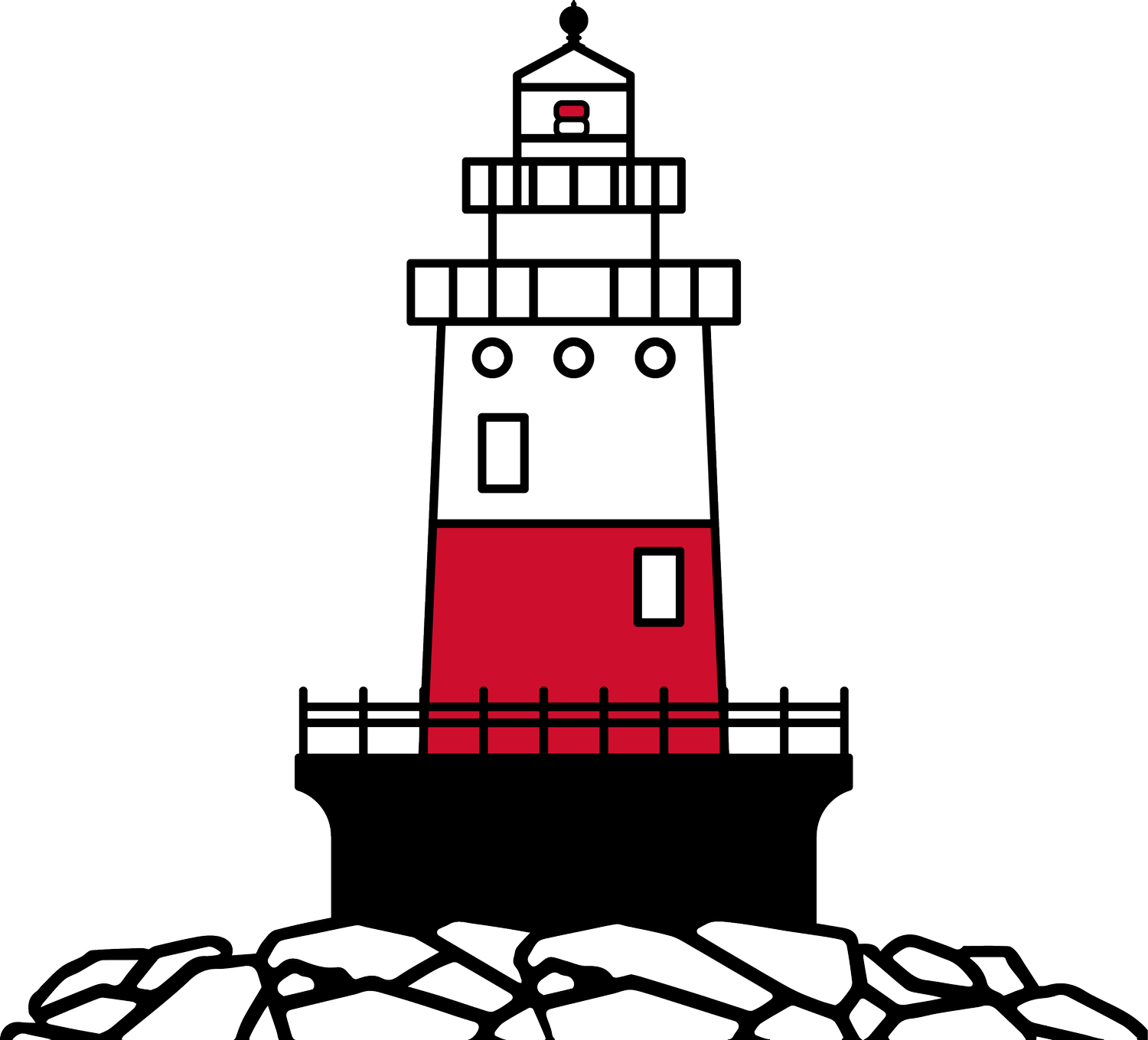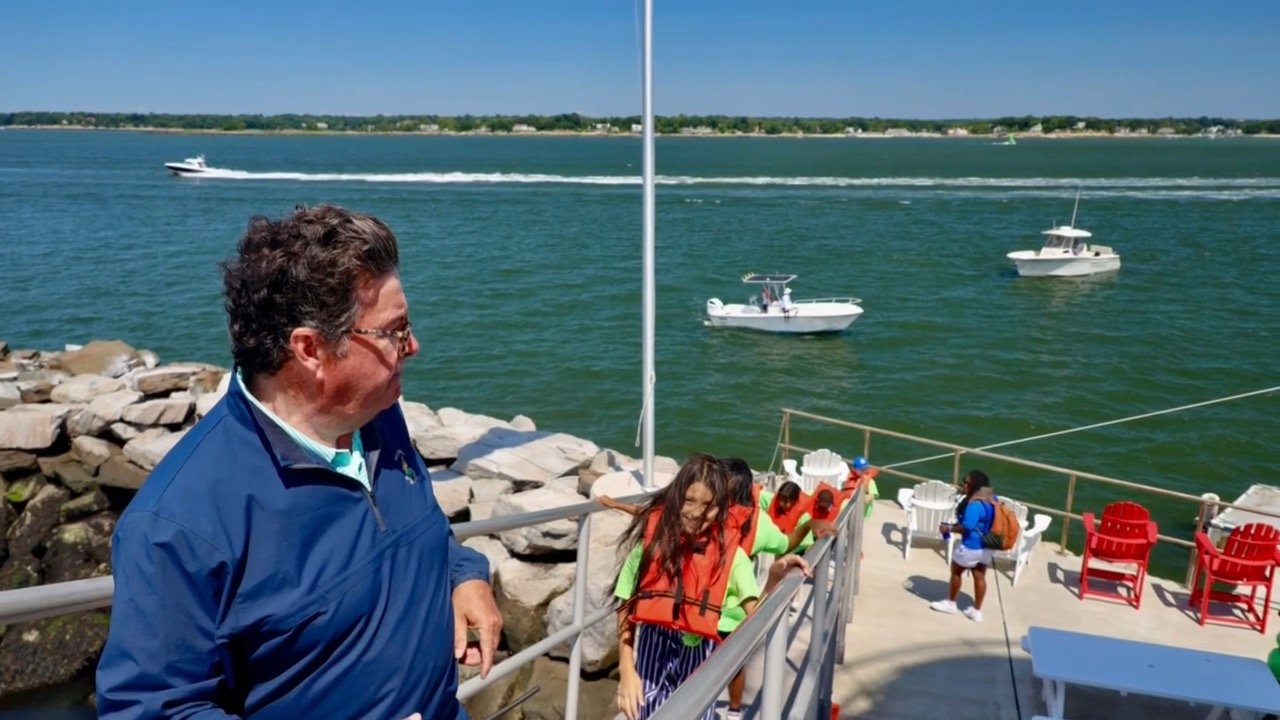
About Us
Our Organization
Our Mission
Keeping the light shining for generations to come.
Greens Ledge Light Preservation Society is an all-volunteer 501(c)(3) nonprofit organization with a mission to restore and preserve Green's Ledge Light, a historic offshore lighthouse that has become an iconic symbol of the Rowayton and Darien communities.
Before efforts began, Greens Ledge was listed in 'Deteriorated' condition by the National Register of Historic Places - one demarcation above 'Ruins' - and was at significant risk of destruction. Greens Ledge Light Preservation Society acquired the Lighthouse in 2016 to spearhead restoration efforts.
With urgent restoration work complete - and with ongoing preservation efforts needed in the decades ahead - we’ve launched the “Next 100 Years” – a campaign that seeks to endow the long-term preservation of the Lighthouse through a focus on Education, Community, and Sustainability.
Preservation Through Education
Restoration
Major structural restoration work commenced in April 2018 and was substantially completed in May 2023, while work continues to restore and preserve the interior and exterior condition of the Lighthouse. The roughly $2M restoration has been entirely privately funded and made possible by the support and contribution of time and services from our community, with volunteer work supplemented by skilled trades work performed by professional contractors.
Education
We welcome students to the Tombros Research & Education Center for weekly summertime visits by Sound Waters Research Intensive participants and also host annual visits from the Darien Power Squadron boat camp. Future plans include collaborating with area schools to develop a unique curriculum covering off-grid systems, lighthouse history, and the Long Island Sound ecosystem, enriching marine education through hands-on learning.
Community
In 2022, we launched the first public tours in the Lighthouse’s 125-year history - one of the few offshore lighthouses to do so. Since 2023, we’ve partnered with the Seaport Organization for monthly summertime tours and hosted club events and the Rowayton Swim Races. To support preservation efforts, we expanded private events, including weddings and fundraisers, and are fundraising to acquire a launch vessel, set for delivery in 2026.
Sustainability
Built as critical navigational infrastructure, the Lighthouse remains as relevant today as in 1902. Climate monitoring has long been essential to its role, and new technologies enhance its environmental contributions. A state-of-the-art weather system now feeds data to the National Weather Service. Future additions include wildlife cameras, water quality, and tidal monitoring systems, maximizing its unique offshore location for research and environmental observation.
Donations to the Greens Ledge Light Preservation Society help fund restoration and preservation efforts to ensure that the Lighthouse remains a shining beacon of our community for generations to come.
Documentation
Greens Ledge Light Preservation Society is a 501(c)(3) organization registered with the IRS (EIN: 81-3221399). Donations are tax-deductible in the US to the fullest extent allowed by law. Here you can find links to our documentation and tax returns filed with the IRS and State of Connecticut.
Our Organization
The Greens Ledge Light Preservation Society is a 501(c)3 nonprofit organization based in Rowayton, Connecticut. Our Board is composed of lifelong local residents and passionate stewards who have been inspired by this historic lighthouse.
Board Members
Tim Pettee, President
Peter Tombros
Alex Pettee
Tom Murphy
Kathy Olsen
Tony DeChellis
Chris Walker
Organizational History
Greens Ledge Lighthouse was put up for public auction in May 2016 by the U.S. Federal Government under the National Historic Lighthouse Preservation Act of 2000. The lighthouse was initially offered to public bodies, but local governments declined to assume ownership, citing substantial restoration costs and logistical challenges maintaining an offshore lighthouse.
The General Services Administration conducted the public auction, which closed on September 15, 2016 with a winning bid $150,000 by the Pettee Family. The Pettee Family donated the lighthouse and related acquisition funding to a newly founded organization, The Greens Ledge Light Preservation Society, to spearhead the restoration and preservation efforts.
The organization was formally organized on September 30, 2016 by founding board members Tim Pettee, Alex Pettee, Brendan McGee, and Shannon Holloway. A lease to the submerged lands surrounding the lighthouse with the State of Connecticut was executed on March 17, 2016.
The Quitclaim Deed to the property was recorded on May 16, 2017, completing the acquisition of the lighthouse by the Greens Ledge Light Preservation Society. The organization was granted 501(c)3 status on August 13, 2017 and subsequently began fundraising and restoration efforts.







